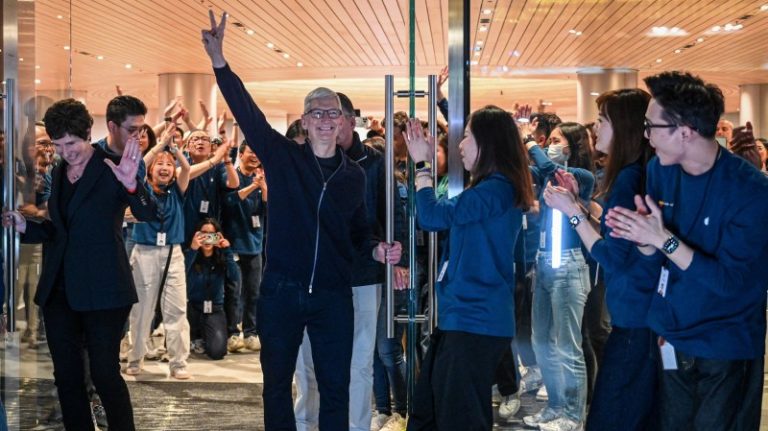Computer power behind AI creates a world of haves and have-nots
Excitement reached fever pitch on Monday as fans packed out a Californian arena, hollering and clapping. They were there for one thing. Not the Mean Girls musical nor Taylor Swift. No. The hype was for the latest computer architecture from Nvidia.
“I hope you realise this is not a concert! You have arrived at a developers’ conference!” Jensen Huang, Nvidia’s founder and chief executive, joked to the crowd as, in his trademark leather jacket, he revealed what they had all come to see: a square just slightly smaller than his hand.
It was the B200, “the world’s most powerful chip”, the latest version of its highly prized computer processor, which the company said will make data processing up to 25 times cheaper and more energy-efficient.
Kowtowing to the chip, even the gods of Silicon Valley, the Big Tech chief executives, put their names to the press release endorsing the new product, from Elon Musk to Mark Zuckerberg and Satya Nadella.
The scarcity of Nvidia’s high-powered graphics processing units (GPUs) is a joke in Silicon Valley, where appetite for these top-of-the-range engines of artificial intelligence (AI) is insatiable.
While bots like ChatGPT might be the sexier end of AI, it’s the chips that make them work and have propelled Nvidia’s share price more than 240 per cent in the past year, with a market cap of $2.24 trillion making it the third most valuable company in the world.
Companies and countries are stockpiling Nvidia GPUs, which cost tens of thousands of dollars apiece, in an attempt to win the AI arms race because, simply put, the more of these you own, the more compute power you have.
“Compute” is a broad term meaning the ability to store, process and transfer data at scale. And the more compute you have, the more powerful your technology can become, ergo the richer you are and the more spare cash you have to throw at compute, the more powerful you will be.
Keeping up with the deep-pocketed tech companies is no easy task. Now the UK government is wondering if there is another way.
Tech research body the Advanced Research and Invention Agency (Aria) has appealed to the UK tech industry to investigate “scaling compute: AI at a thousandth of the cost”.
With £42 million of backing, it is calling for ideas to make computer processing power at a fraction of the price, using the natural world as inspiration.
It is wildly ambitious. There’s a reason Aria is being tasked with tackling these “moonshot’ technologies.
Yet if the concept is successful, it could serve to democratise AI and would solve a major problem: that the cost of compute is creating what the Tony Blair Institute has called “a new global digital divide” between the haves and have-nots of compute.
“The world’s leading AI models now cost upwards of £100 million to train, and this combination of technological significance and scarcity have far-reaching economic, geopolitical, and societal implications”, Suraj Bramavar, the Aria programme director, said.
Last year an independent government review found the UK’s capability was woeful, saying that the country is “falling behind international competitors and does not have a compute ecosystem fit to serve its world-class scientific base and innovative economy”.
According to the TOP500 report, which tracks the subject, the UK had only 1.2 per cent share of the global compute capacity in 2023.
The government says that it has put £1.5 billion into compute infrastructure, including into building two supercomputers in Cambridge and Bristol, with the latter being ten times quicker than the UK’s current fastest machine.
Is this enough? Many in the industry, such as Nathan Benaich, co-author of the influential State of AI report, do not think so and say that “the government’s current plans lack ambition, resource, and urgency”.
Investing in compute is hugely expensive, especially in a challenging economic time. Aria’s big idea to create cut-price compute cannot be the only solution, but it certainly feels worth a moonshot.
Katie Prescott is Technology Business Editor of The Times






